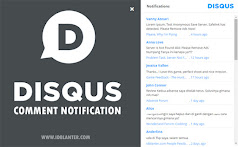Posted by Adam Bosworth, Vice PresidentWhen I talk to people using Google to search for information about their health questions and how well search answers these questions, I hear several common concerns. I want to list them and discuss our thoughts about them.
How do I know if the information is trustworthy and reliable?There is a lot of material out there about drugs, diseases, procedures and treatments. How do you know what is trustworthy and what isn’t? Search is great at finding us places with relevant information, but it is hard to know which links are reliable and which are less so.
Honestly, this is a hard problem. At Google, we have tried, as I said in an earlier post, to enlist the help of the health community to help us know which links contain medically reliable information, sift these reliable links so that they tend to show up relatively earlier in the search results, and then let you decide which groups in the health community you trust. If you go to Google and type in [Lipitor], for example, and then you click on the “For patients” link and look carefully, you’ll see that the search results often include at the bottom the word “Labeled By,” followed by words like NLM and HON. NLM stands for the National Library of Medicine, the world’s largest medical library, and HON stands for Health on the Net Foundation, an organization which is in the business of certifying web sites with health content that is reliable. These are organizations that have marked the part of the web that this link in the search results points to as medically reliable. It seems that we at Google may not have done a great job of making this clear enough. Unfortunately, many of you either don’t notice these words when you’re searching about health questions at Google or have no idea what they mean. Clearly, we can do better at making this kind of labeling noticeable and your ideas on how we could make it clear to you that a site is medically reliable or trustworthy would be greatly appreciated as we think this through.
Am I getting the best standard of care?There is, actually, a lot of information out there about generally accepted medical guidelines for care. For most diseases, the medical literature lists the medically agreed-upon standard of treatment, rules to follow, and guidelines for which tests to administer and the best course of treatment - although it is hard to pull together from the various medical organizations and texts as it is constantly evolving. Experts determine which drugs make sense based upon a patient’s condition, other conditions and drugs, age, gender, weight, and so on. There are of course always cases where doctors need to make exceptions to these rules about which drug to administer due to side effects and/or prescribe an alternative drug due to the patient’s specific medical history. The point is that there are guidelines to help doctors with these decisions. However, this information isn’t really accessible to those of you who aren’t health professionals.
Speaking, I think, both for those of us at Google and most of you, given our specific condition or conditions and medicines, just knowing what the guidelines and generally accepted standard of care is for us specifically would be hugely helpful in knowing what to discuss with our doctors and what to research further. Today, even if we can figure out which sites upon which to rely, it is hard to find this out. We don’t know where to start. Our treatment scares us, or our drugs have worrying side effects, or we’re just frightened that we’re not getting the treatment we should be getting.
Honestly, this information can even help our doctors sometimes. They are over-worked and often pressed for time and it cannot ever hurt to double check. Sometimes they didn’t get accurate or complete information from us. While most drug-to-drug and drug-to-condition interactions are known to our doctors, they do change and the doctor might miss a new one or not know about all your drugs because we forgot to tell your doctor about one. The statistics show that mistakes happen. In fact at some point in a patient’s life, the odds of them being treated in a way which doesn’t follow the guidelines and rules is about 45%. There are estimates that somewhere between 44,000 and 98,000 Americans die every year from a preventable medical error at a hospital — or about 150 to 300 preventable inpatient death a day. And approximately 770,000 people are injured or die each year in hospitals from an adverse drug event. There are roughly 5,000 preventable medical errors a day taking place at doctor’s offices.
So it seems that it would really help to let people know. It is tricky, however. Everybody’s condition is unique. It isn’t possible to just play doctor and tell you exactly what your treatment should be and why. Even doctors have a hard time with this because of the incredible and ever changing complexity of modern medicine. What is the best way to help people searching for answers to their health questions to know the right standard of care they should be receiving, what treatments or classes of medicines they should be researching, and what procedures might be indicated?
Who is the best doctor or institution for you?Isn’t it strange that you can find out a lot about a restaurant on the web or about a movie, but not about a doctor? In fact you usually don’t even know who to go to and just accept whoever your general practitioner recommends? You clearly don’t just eat at restaurants other restaurants recommend, even though you might take it into account. Now admittedly there is a difference here. When it comes to food, you know what you like and the worst that can happen is you don’t like it. But when it comes to your health you may not know what is best, and you can’t necessarily tell if we’re getting the best possible care. Still, here is a common situation: You’ve been diagnosed. Your primary care physician and you have discussed it and it is clear that you need a specialist and your doctor has referred you to one, but you’re wondering how you know who is the best out there for you. How do you know whether they cover your insurance? How do you find them? Today, often you just take your doctor’s referral.
Normally there are lots of doctors who could treat or diagnose you. And in point of fact there is a lot of information about doctors floating around in the ether. Where they went to school is known. Whether they are board certified is known. What is their specialty is known. CMS (Medicare) and insurance companies actually know how many procedures of various types most doctors regularly perform. And this turns out to matter. There is an excellent book out called
Complications by Atul Gawande discussing a lot of these matters, but in particular the book notes that practice really does make perfect.
But how do you know who is well seasoned? Do you always judge who to take care of you by how long they’ve been in practice? What does “best” really mean? This is a hard question. Mortality rates, for example, may not be a good indicator. Some specialists only treat the patients that others can’t handle, and so, naturally, even though they are the best in the world, their rates might not be the best. Sometimes your choice may be dictated by other considerations. If there are two possible specialists, one is a man and the other is a woman, then sometimes people care about that.
It isn’t clear how we can best help. We don’t want to inadvertently steer you away from a brilliant doctor just because his or her mortality rate appears too high. What do you think, and what would you like to see made available on the web when you are searching for doctors?
SummaryAt the end of the day, all these questions are about how you find the information you need. They are deceptively simple. If they were about restaurants, they would be trivial. But they are actually matters of life and death in the extreme and quality of life in the common case. In short, they matter profoundly.
I’d like to say that we have all the answers. But we don’t. Mostly, at the moment, what we have is questions and
we’d love to hear from you.
Update: New contact link.




 - click on it to see the additional rich data expand below the original search result.
- click on it to see the additional rich data expand below the original search result. 











.jpg)

